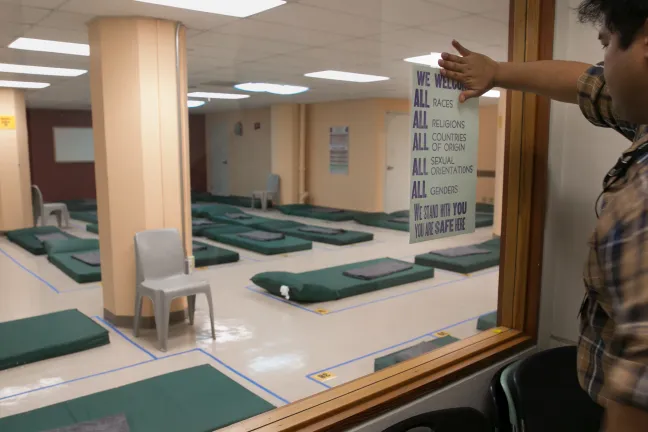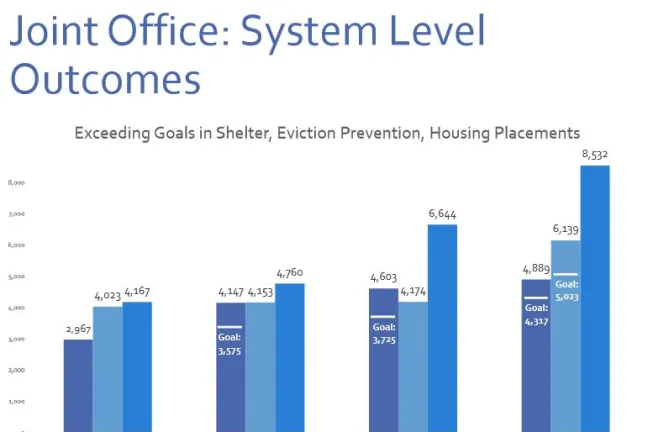Even as several winter-only shelter beds wind down as planned this spring, the number of year-round shelter beds operated by the Joint Office of Homeless Services will increase this year.
One winter shelter set to close last month, in Multnomah County’s Mead Building, has remained open instead -- providing space for 75 neighbors downtown.
In addition, the County will open space for 125 men in the Department of Community Justice (DCJ) East Campus at 1415 SE 122nd Ave. Both sites will be operated by Transition Projects.
Those beds will maintain year-round shelter capacity after the 200-bed Hansen Shelter closes as planned this June after two years. But they will also join 50 additional new ongoing beds: 35 winter beds at Old Town’s Salvation Army Female Emergency Shelter will remain open year-round; 15 winter beds have also been converted at the Do Good veterans shelter in Hollywood.
Together, the new beds at the four sites add to a total of 250, more than the 200 at Hansen currently.
The beds at DCJ and Mead will be needed at least until two new long-term shelters open in the coming months. It’s possible both sites could stay open beyond that period.
Neighbors on a steering committee are helping to design a 120-bed shelter at 6144 SE Foster Road. And the nonprofit Oregon Harbor of Hope has announced plans, and financial backing, to construct and operate a 120-bed shelter and navigation center near the Broadway Bridge in the Pearl District.
Multnomah County and the City of Portland delivered on a promise to double year-round shelter capacity made in 2015.
Overall, the community operates more than 1,300 publicly funded year-round beds. More than 8,500 people spent at least one night in shelter last fiscal year.
Because of that expansion, in the 2017 Point in Time Count, more neighbors were counted in shelter than without for the first time.
And though the County’s overall number of neighbors experiencing homelessness increased, the number of neighbors reported without shelter fell nearly 12 percent. In contrast, other West Coast cities facing a housing affordability crisis like Portland’s saw major increases in unsheltered homelessness between 2015 and 2017.
But Multnomah County and the City of Portland also remain committed to a vision for ending homelessness that relies on housing. Chair Deborah Kafoury and Mayor Ted Wheeler have proposed expanding their record investments in housing placements next year.
In the 2016-17 fiscal year, nearly 4,900 people were placed from homelessness into housing, up 65 percent from three years prior. Some of those placements come from shelter, but many also come directly from the streets, where outreach teams work daily to build connections with campers.
Two winter-only shelters closed this spring as planned, but residents at those shelters haven’t been moved to the streets.
Of the nearly 20 families with kids staying in a winter shelter hosted by Congregation Beth Israel and operated by Portland Homeless Families Solutions, all left with a housing plan. Seven families already have permanent housing; the rest are staying in other shelters or have motel vouchers as they wait for their housing.
At the Columbia Shelter, hosted at the Shleifer Furniture building amid construction on a new hotel there, all of the men staying in the space were moved to other beds operated by Transition Projects.


